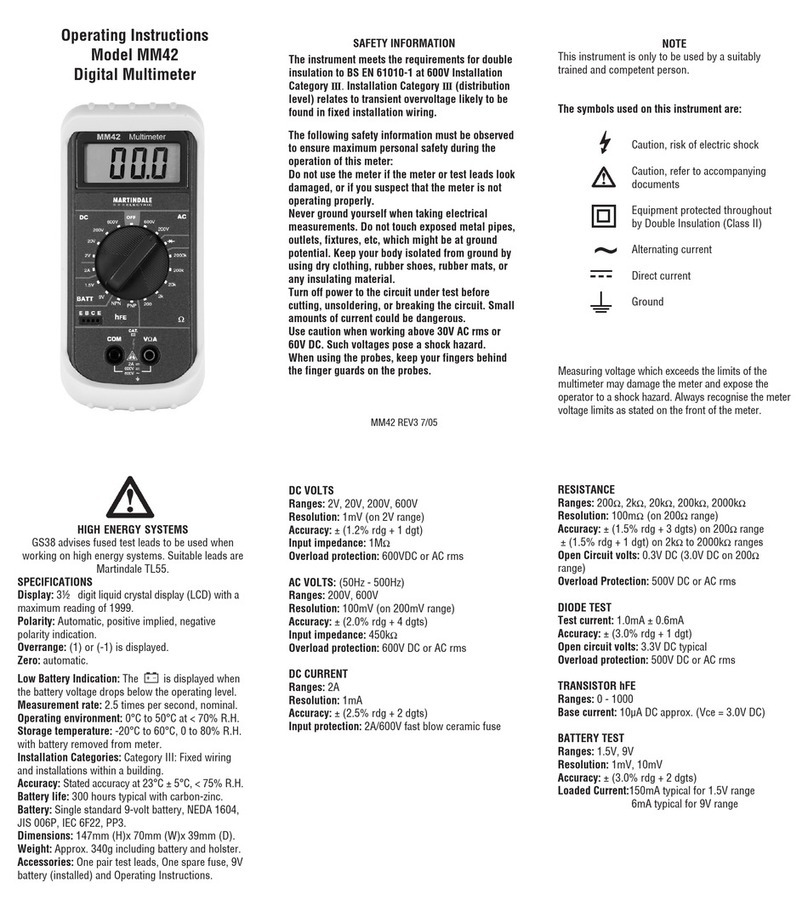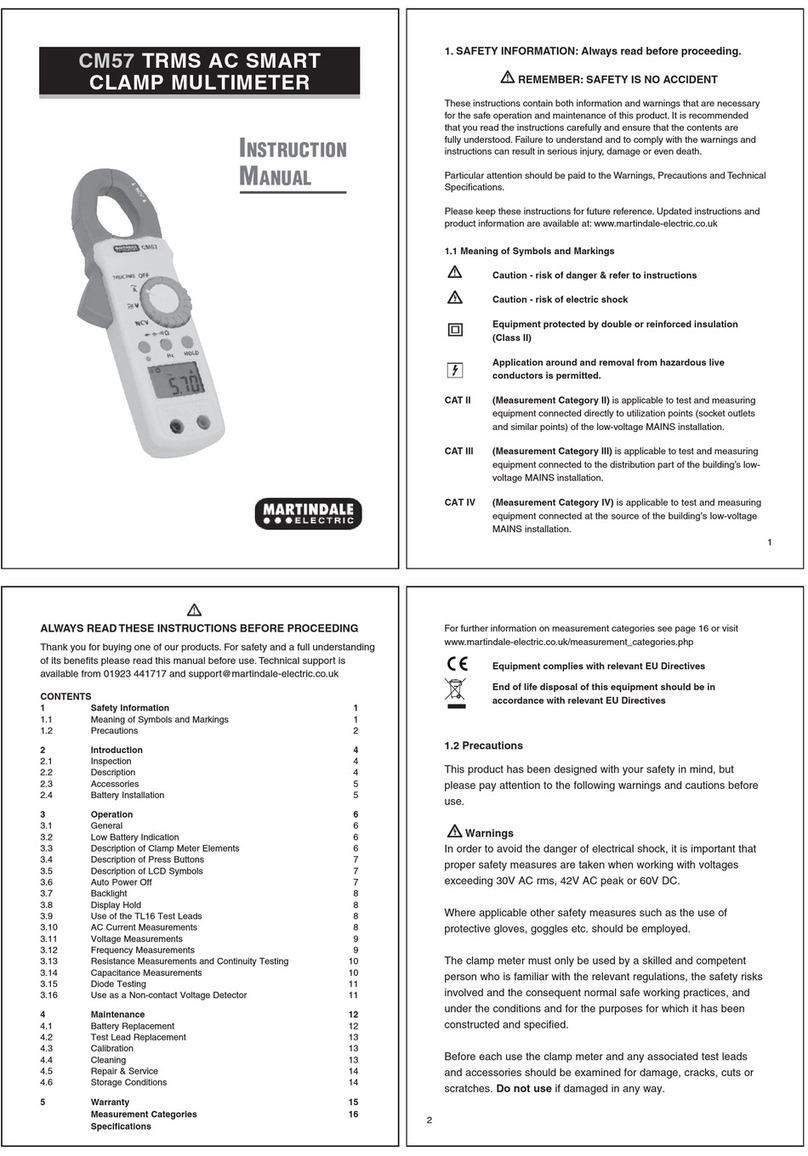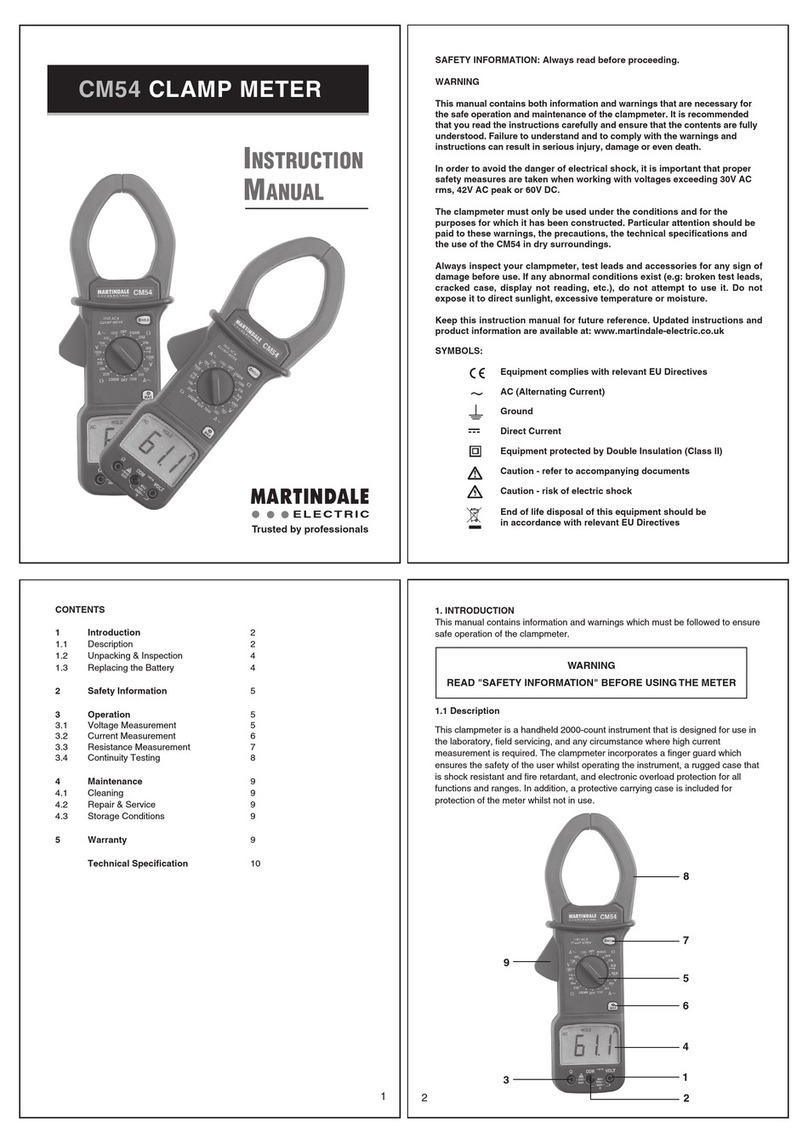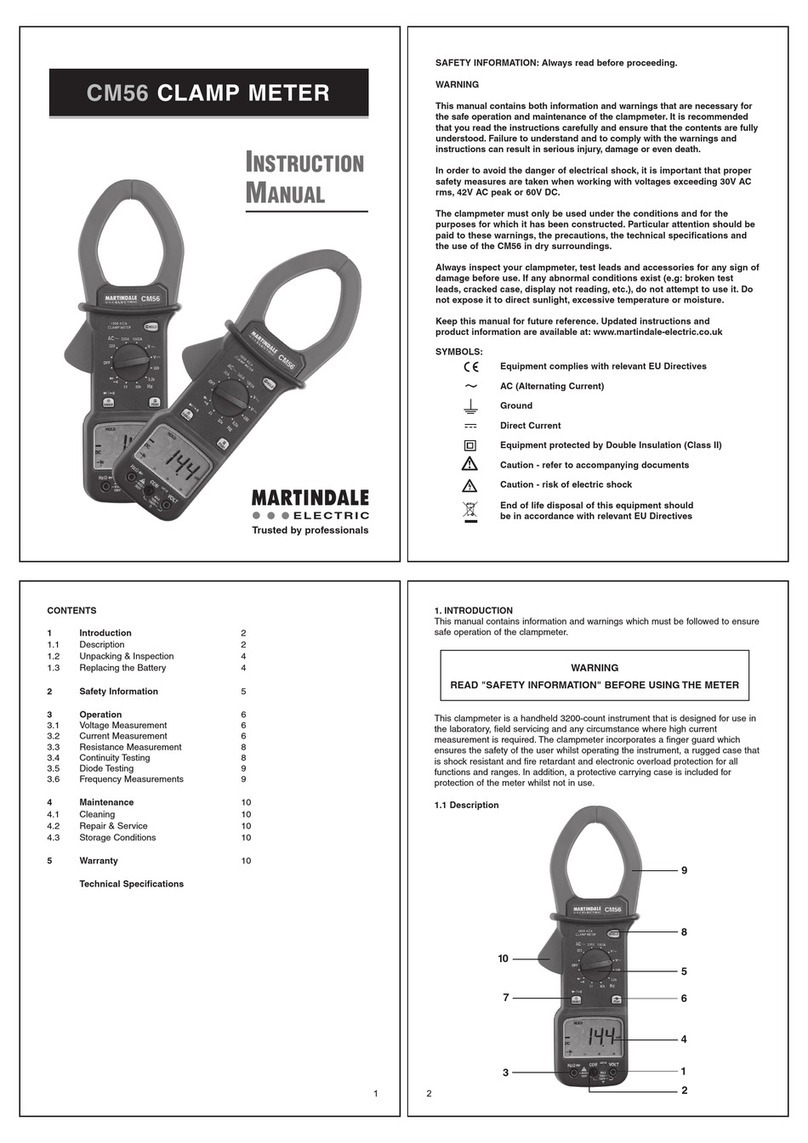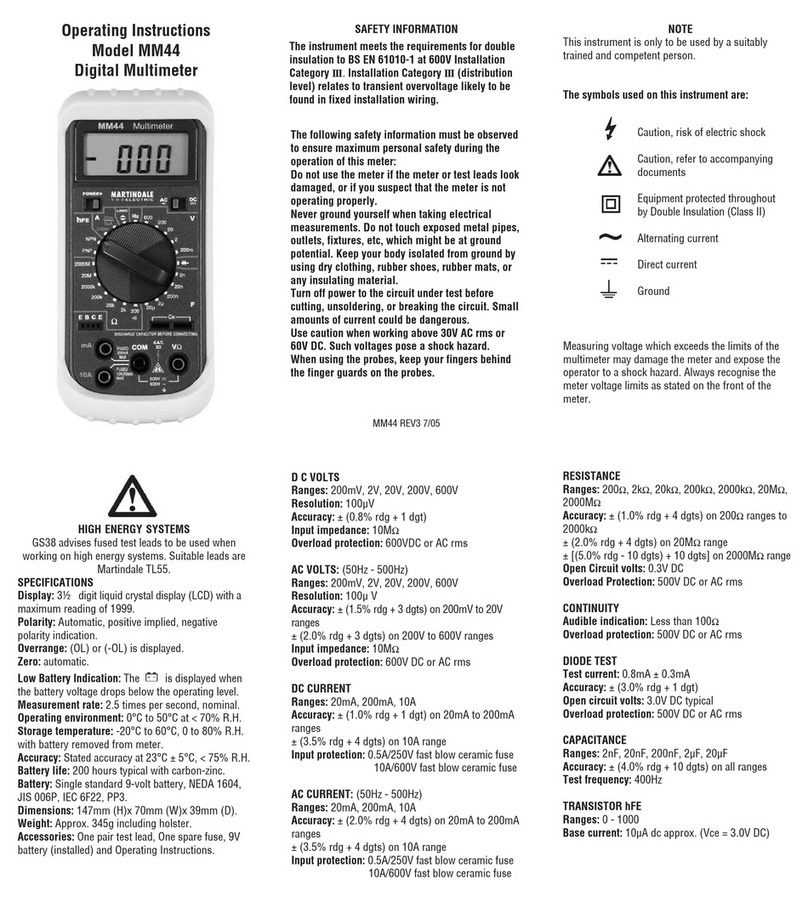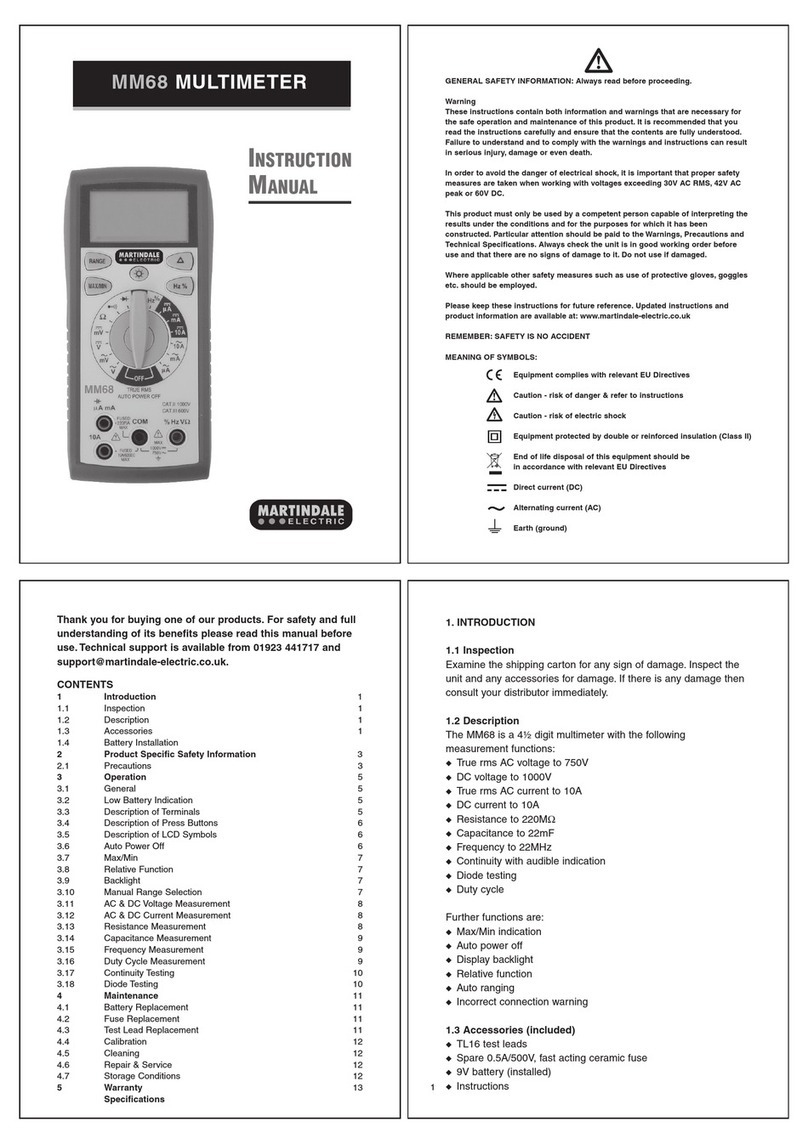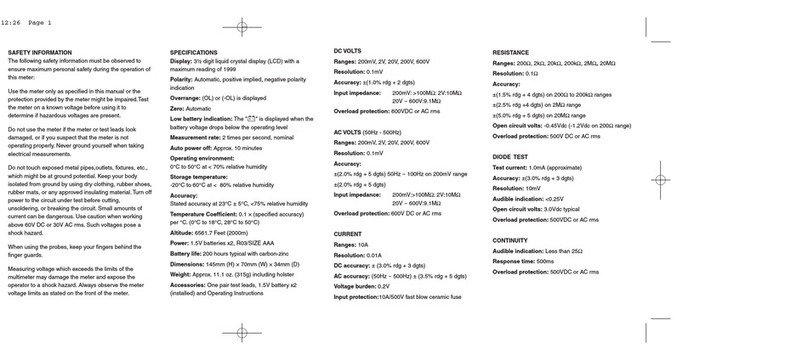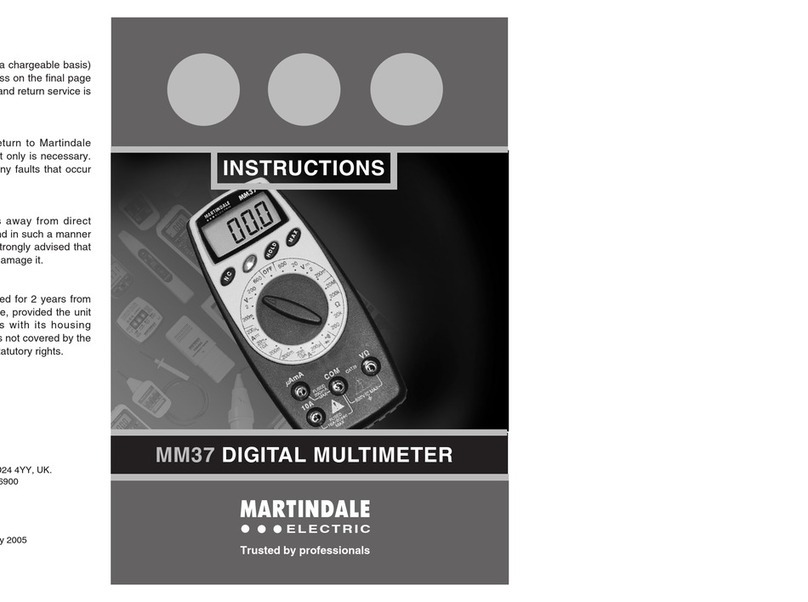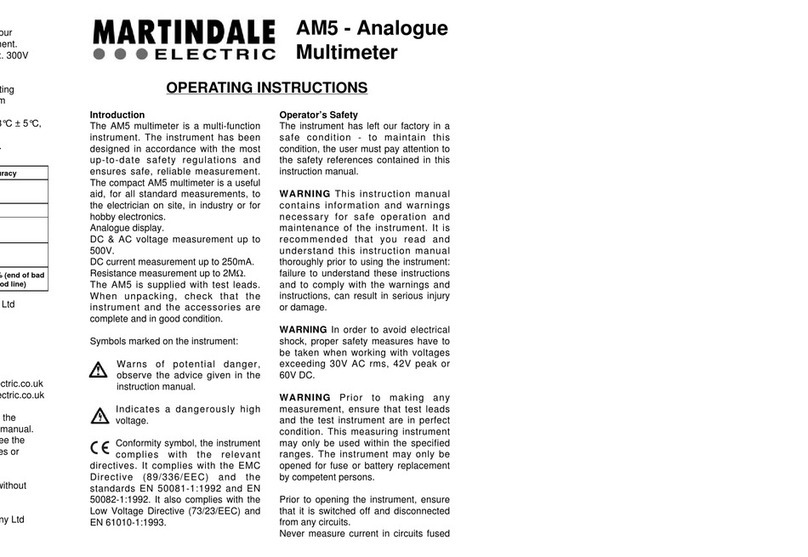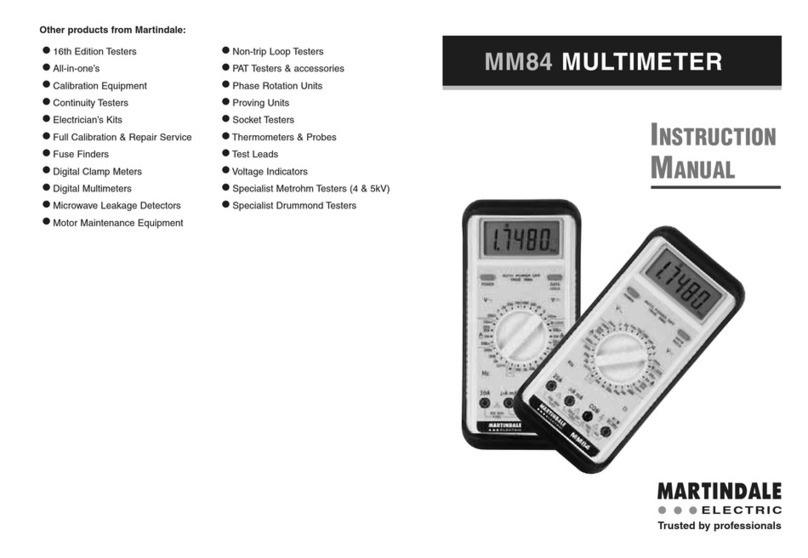SAFETY INFORMATION: Always read before proceeding.
WARNING
These instructions contain information and warnings that are necessary for safe
operation and maintenance of the MM34. It is recommended that you read the
instructions carefully and ensure the contents are understood. Failure to
understand the instructions and comply with warnings and instructions herein
can result in serious injury, damage or even death.
In order to avoid the danger of electrical shock, it is important that proper safety
measures are taken when working with voltages exceeding 30V AC rms, 42V AC
peak or 60V DC. Never exceed the maximum allowable input level for each
function and range. Refer to the specifications for maximum inputs. Never
touch exposed wiring, connections or live circuits.
The MM34 must only be used in conditions and for the purpose which it has
been constructed. Attention should be paid to safety instructions, technical
specifications and use of the MM34 in dry surroundings.
Always inspect your meter, test leads and accessories for any sign of damage
before use. If any abnormal conditions exist (e.g: broken test leads, cracked
case, display not reading, etc.), do not attempt to use it. Do not expose it to
direct sunlight, excessive temperature or moisture.
Keep these instructions for future reference. Updated instructions and product
information are available at: www.martindale-electric.co.uk/instruct.html
SYMBOLS: Equipment complies with relevant EU Directives
AC (Alternating Current)
Ground
Direct Current
Equipment protected by Double Insulation (Class II)
Caution - refer to accompanying documents
Caution - risk of electric shock
4.4 Calibration
The recommended calibration interval is 12 months.
Martindale Electric will carry out routine calibration (on a chargeable basis)
if the instrument is returned, carriage paid, to the address on the final page
of this document. Alternatively, a chargeable collection and return service is
available.
4.5 Repair & Service
There are no user serviceable parts in this unit. Return to Martindale
Electric Company Ltd if faulty, unless fuse replacement only is necessary.
Our service department will promptly quote to repair any faults that occur
outside the warranty period.
4.6 Storage Conditions
The MM34 should be kept in warm, dry conditions away from direct
sources of heat or sunlight, with the battery removed and in such a manner
as to preserve the working life of the multimeter. It is strongly advised that
the unit is not kept in a tool box where other tools may damage it.
4.7 Warranty
Faults in manufacture and materials are fully guaranteed for 2 years from
date of invoice and will be rectified by us free of charge, provided the unit
has not been tampered with and is returned to us with its housing
unopened. Damage due to dropping, abuse or misuse is not covered by the
guarantee. Nothing in these instructions reduces your statutory rights.
211
